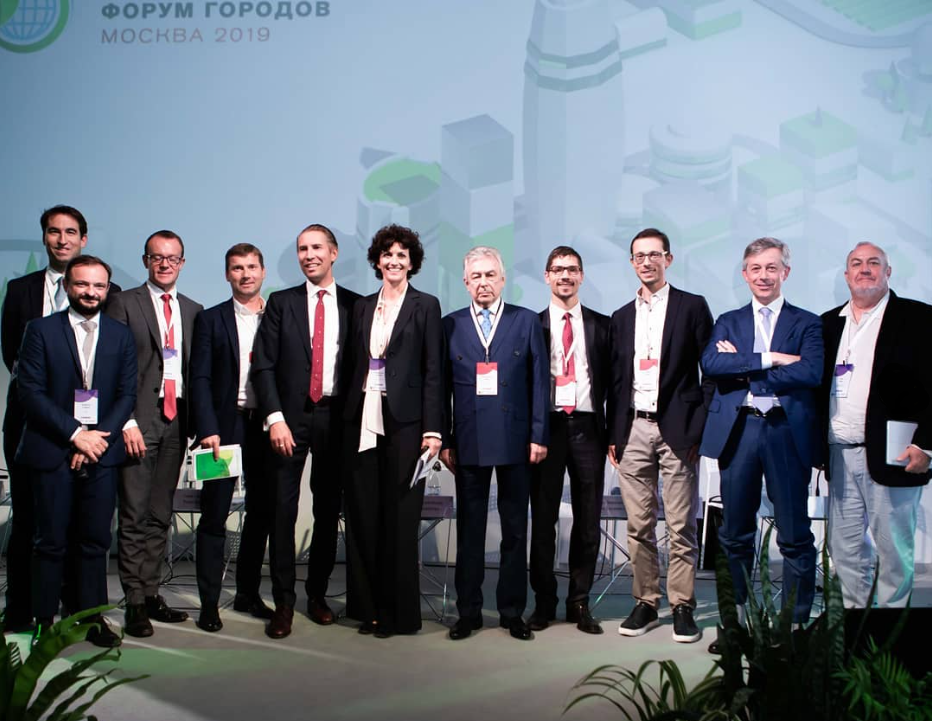Economics of green technologies in cities and buildings
Results of the III Climate Forum of Cities
On September 4-5, 2019, the III Climate Forum of Cities was held, where experts from 20 countries of the world met. A meeting of experts in the economics of green technologies was held in the Zaryadye Concert Hall on July 4.

Today we see that the use of “green” technologies in buildings is an approach to the implementation of an innovative and competitive economy. Entire cities are certified according to the international certification systems LEED, BREEAM and WELL. These systems are leaders in energy efficiency and environmental design. Leading Russian and international developers are actively using certification systems for industrial and civil buildings, entire districts and cities.
Studies have proved that buildings built on the principle of “green” construction:
- consume 25% less energy;
- labor productivity in them is 16 higher%;
- the operating costs of property owners are reduced by 19%;
- the value of such buildings is 10% higher compared to traditional construction.
The international and Russian experience of certification, the city of Savona, the territory of the Port of Nova in Italy, the territory of the Skolkovo Innovation Center, HPBS facilities, the L’Oréal plant in Russia, real estate of O1Properties, Saint-Gobain facilities, has proved that “green” construction allows you to achieve significant savings in various areas of building operation and occupy leading positions in the world.

Today, “green” projects in Russia are being built without government incentives, but it is certainly necessary to promote and support the principles of green construction at the state level, because its effectiveness is confirmed by successful world practice.
First of all, the following set of measures should be applied:
- Preferential and accelerated connection to utility networks, by reducing the load on the network. (30% reduction in the cost of infrastructure construction);
- Introduction of educational programs at universities and advanced training courses with obtaining accreditation of experts. (Introduction of mathematical modeling of buildings, integrated design and lifecycle management);
- Preferential rates on loans from banks that finance such projects. (Subsidizing 2-3% by reducing the risks of investing in such facilities);
- Property tax reduction. (Such projects are more difficult to build, but they have a positive impact on the economy, nature and human health);
- Creation of an independent monitoring program for implemented solutions. (Shows real statistics on energy consumption, resource consumption and quality of operation. Has an independent confirmation, certificate);
- Design and Construction Manual;
- Popularize green construction among the population by attracting reputable and famous people. (For example, the president, show business stars, actors, directors, government members, journalists, TV presenters).
Experts in the economics of green technologies, who attended the meeting:
- Mrs. Ilaria Caprioglio – Mayor of Savona, Italy;
- Stefano Corbella – Head of Sustainable Development of the Italian developer COIMA, Italy;
- Mr. Carlo Battisti – Vice President of the International Living Future Institute, Italy;
- Mr. Kevin Bell – Professor, University of California at Santa Cruz, Department of Electrical Engineering, USA;
- Antoine Peyrude – CEO of Saint-Gobain, Russia, Ukraine and CIS countries;
- Pavel Barbashev – Director of Asset Management at O1 Properties, Russia;
- Mr. Vincent Breucq – Director of the L’Oréal branch in Kaluga Region, Russia;
- Ilya Zavaleev – Director of HPBS, Russia;
- Andrey Asadov – Asadov Architectural Bureau, Russia;
- Igor Moskalenko – Director of the company KORS, Russia.
LEED Certification
WELL Certification
BREEAM Certification
A Course of Lectures on the Green Economy
Climate Change and Modern Architecture






